19th February - 25th February
Partner Company: Applied works
Brief: Design a way for people to experience The Hoffman Centre collections
Group: Maria Shuttleworth, Tatiana Bohsali, Qendresa Selimi, Kate Chernysheva
Partner Company: Applied works
Brief: Design a way for people to experience The Hoffman Centre collections
Group: Maria Shuttleworth, Tatiana Bohsali, Qendresa Selimi, Kate Chernysheva
EXPLORation
During our first meeting, we discussed the feedback from our presentation and agreed that it is time to experiment through making prototypes, physical or digital. Furthermore, we have established our target audience. We unanimously agreed that we should be focusing on young people aged 16-18. We felt like it was the age group when people are exploring different areas they want to work in and they would be shaping the future of air travel. Hence, we were aiming to engage sixth-form/college students with our design.

This week's meetings. Screenshots by Kate.
Following the suggestions from the previous week we decided to look into Cameron Tonkinwise and Backcasting, which helped us to understand Design Fiction from a different perspective.
"Cameron Tonkinwise emphasises that the current role of speculative design is to provide answers to the mistakes of the modernist project and to re-materialize visions of a radically different future in our everyday lives" (speculativeedu.eu, n.d.).
Similarly, Backcasting is used to imagine the desired future and work backwards to see the steps needed to get there.


Backcasting explored by Maria.
Backcasting infographic taken from an online source.
This gave us a crucial understanding that it is important to not just imagine a better future where all the problems are fixed but to understand how these problems appeared.
Gamification
Since identifying the target audience, we decided to look into gamification as a way to attract young minds. It is a widely used principle that focuses on inserting game elements into different contexts. Hence, we decided to come up with a platform that would present information in a playful manner and started brainstorming.

Mind map developed collaboratively on Miro.
STORYBOARDING
We all agreed that a game concept would be a great way forward. Hence, we each decided to create our own storyboards to explore different ideas and combine them afterwards. This was a very good way to present/pitch our ideas to each other as it made it easier to understand.
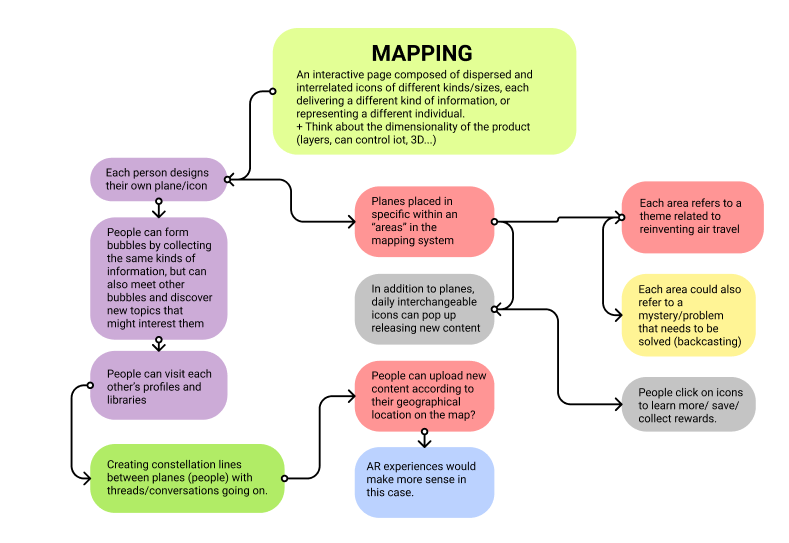
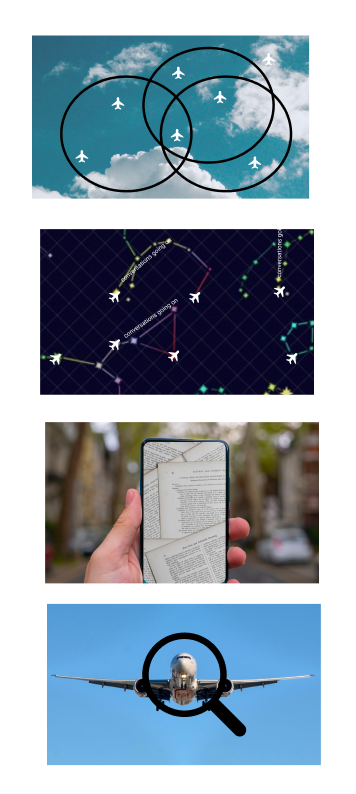
Idea 1 - User journey and storyboard by Qendresa. Images included taken from online sources.
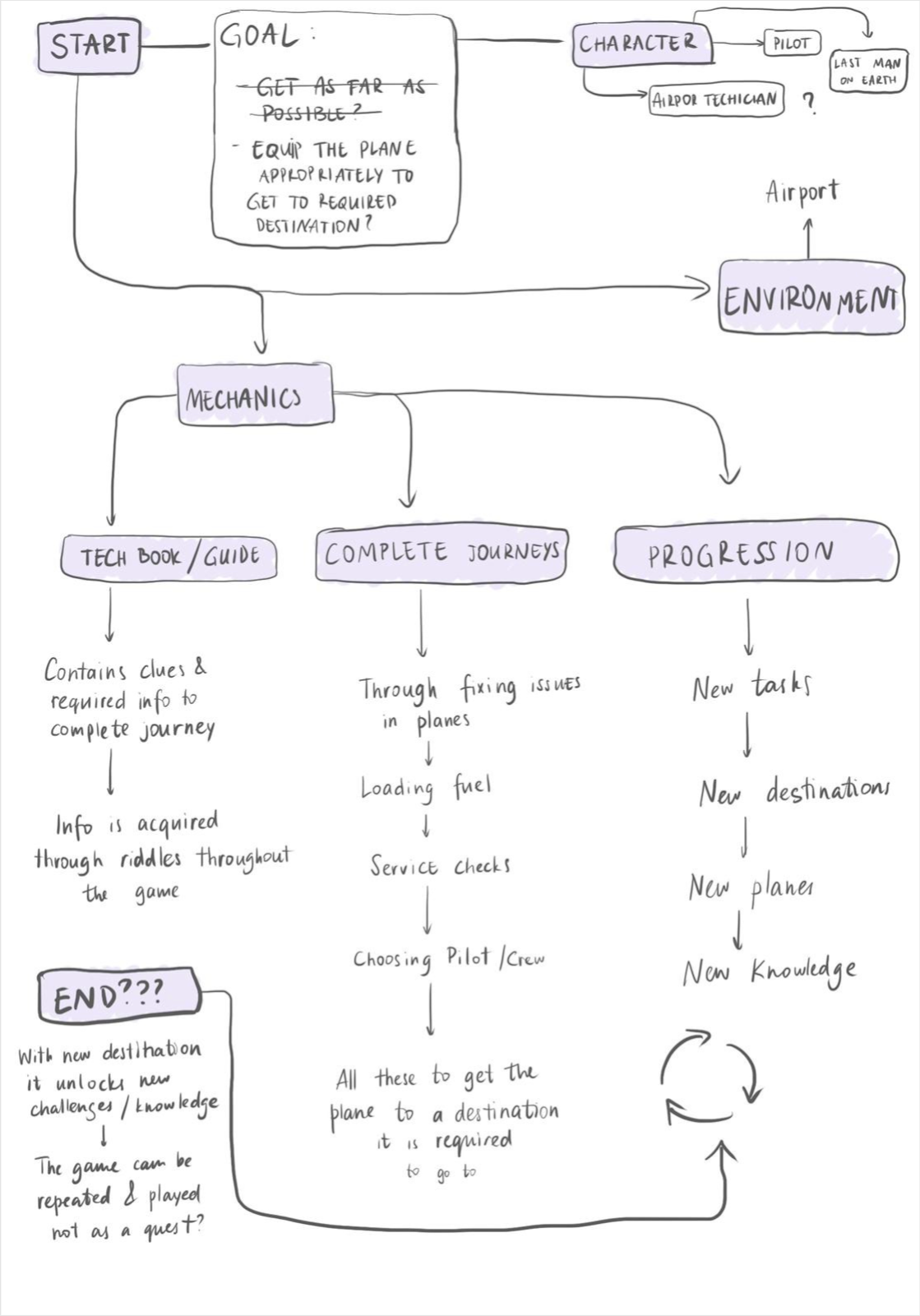

Idea 2 - User journey and storyboard by Kate. Images included taken from online sources.

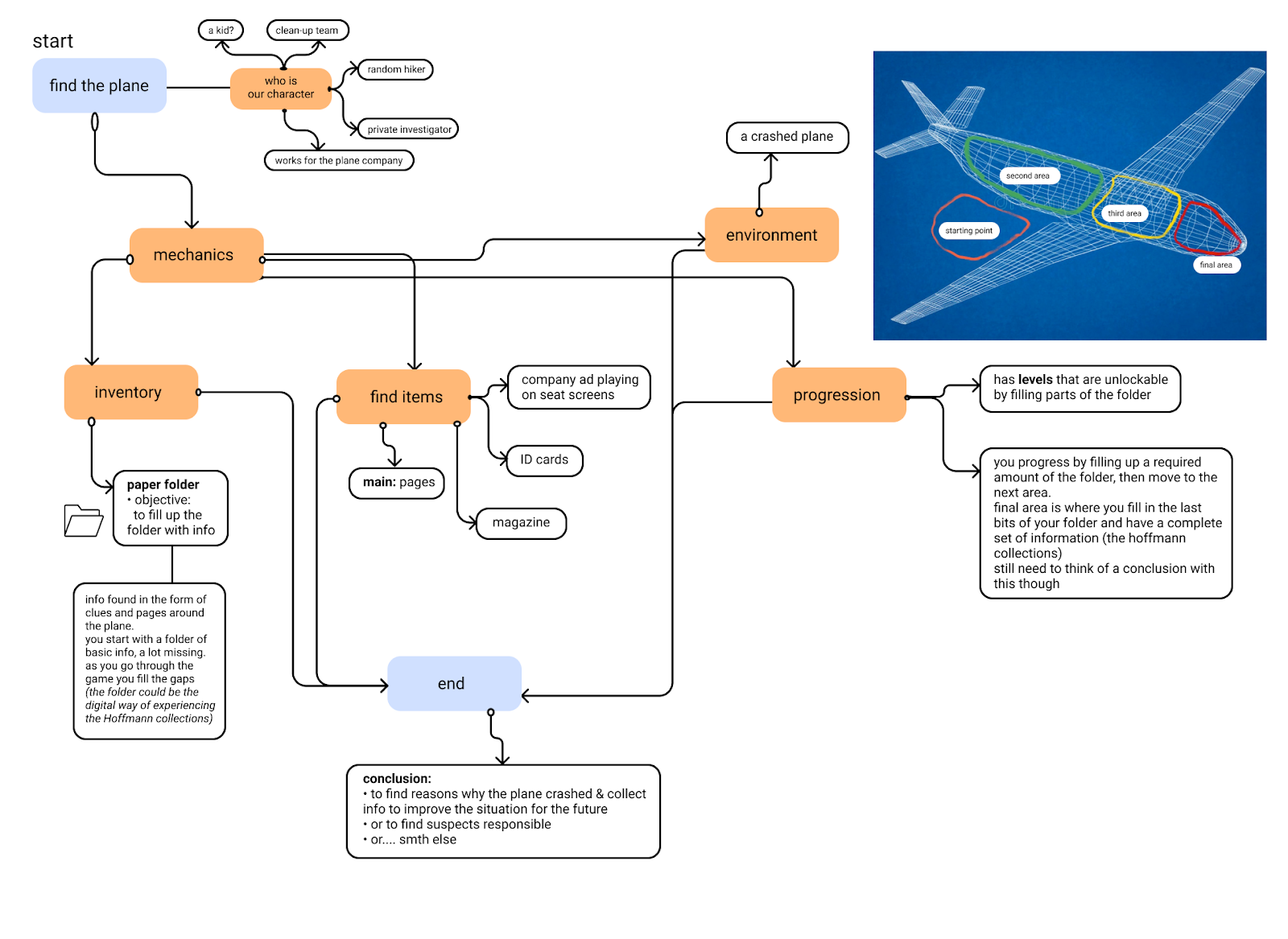
Idea 3 - User journey and storyboard by Maria. Images included taken from online sources.
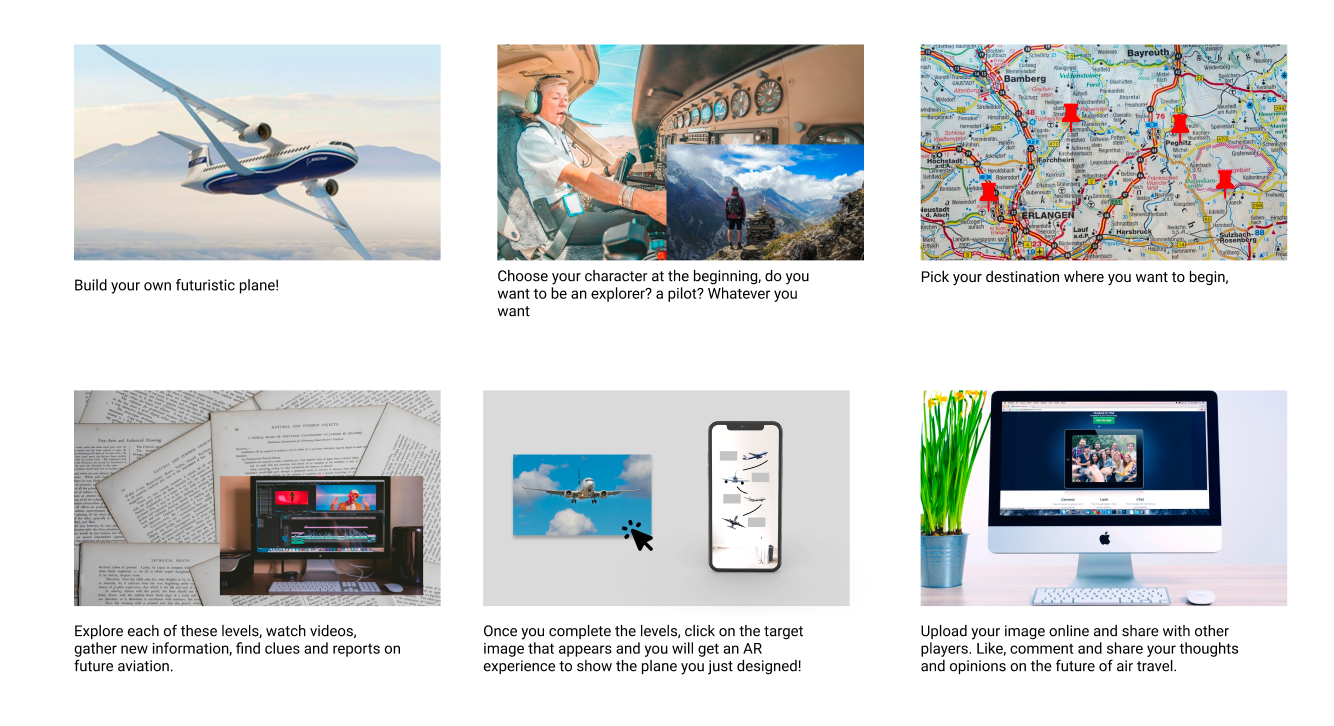

Idea 4 - User journey and storyboard by Tatiana. Images included taken from online sources.
In addition, we decided to take a more technical route and create a website for exploration, bearing in mind the game elements.


Storyboards created during brainstorming. Top storyboard by Tatiana, bottom storyboard by Maria.
MEETING WITH APPLIED WORKS
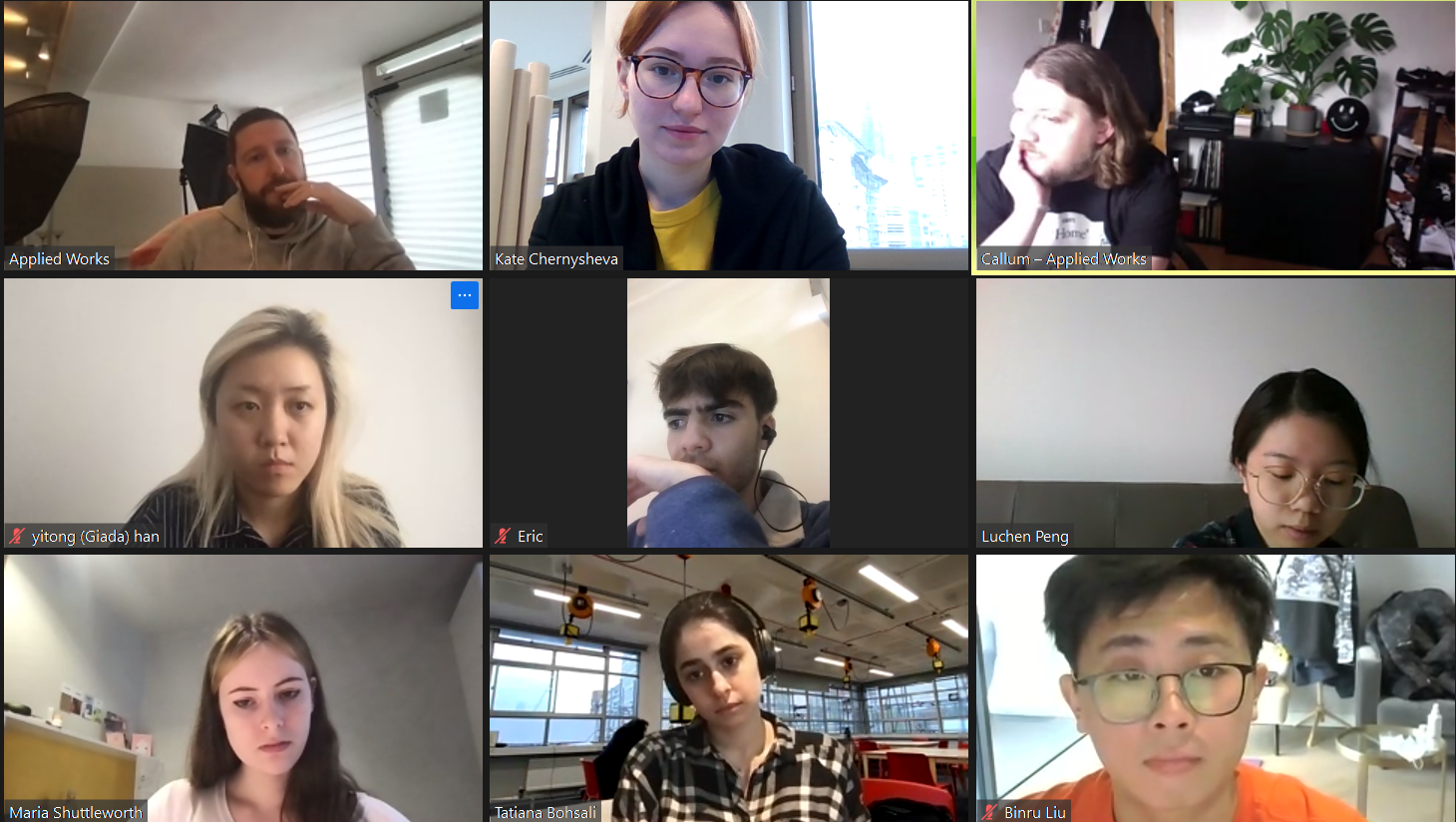
A meeting with Applied Works to discuss some of the questions we had about the project. Screenshot by Kate.
That week we also organised a meeting with Applied Works to address some of the struggles we have encountered. We had questions about Hoffmann's centre target audience, whether they have brand guidelines we should keep in mind etc. Most of all, we had acquired so much information by that point we wanted to know whether there are topics within our areas that we should prioritise in order to make our projects more focused. We were happy to have an opportunity to speak to Tom and Callum again, they encouraged us to not be afraid to experiment, avoid creating constraints and do something unique.
PRESENTATION & FEEDBACK
We had a very productive week, where we did a little bit of everything including research and storyboarding. However, it was pointed out that our idea doesn’t involve any senses and is very informational, rather than physical which made us question the importance of tangibility and human experience in our project. Furthermore, we were encouraged to think more carefully about gamification as to not make it too manipulative. Overall feedback was to make it real and make it weird.
bibliography
Shannon, J., 2021. 8 Core Human Drives in Gamification. [online] Gamify.com. Available at: https://www.gamify.com/gamification-blog/8-core-human-drives-in-gamification-marketing-video
Speculativeedu.eu. (n.d.). SpeculativeEdu | New Reflections on Speculativity. [online] Available at: https://speculativeedu.eu/new-reflections-on-speculativity/.
The Natural Step Canada. (2008). Backcasting. [online] Available at: https://www.naturalstep.ca/backcasting.
Images:
Backcasting - https://www.naturalstep.ca/sites/default/files/page_sustainability_backcasting2.jpg